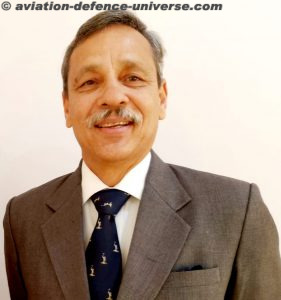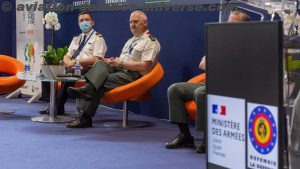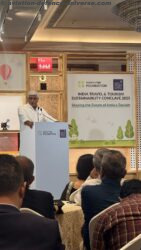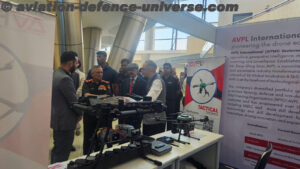
- Is Atmanirbhar Bharat an answer?
By Maj Gen LB Chand, VSM (Retd.)
New Delhi. 13 June 2022. Historically, India has been overly dependent on Russia for high technology defence systems. Russia has always been trustworthy and forthcoming when others have imposed unilateral restrictions on defence exports. As a result, military systems like Migs, Sukhoi, MI, IL 76 fleets, submarines, artillery guns, ICVs, AFVs, Electronic Warfare systems/ suites, Aircraft Carriers, Naval Vessels (Rajpiut/ Talwar (JV)/ Jyoti etc Class), Brahmos (JV), S-400 etc are the main stay of Indian Defence Systems and will continue to be for the next ten years. These constitute over 50% of Indian Defence arsenal.
It has always been the policy of India to boost indigenous R&D and production of Defence Systems (and IT products). Based up past experience like – sanctions post 1974 and 1998 Nuclear tests, Flip-Flop attitude of USA Congress on Foreign Military Sales restrictions to India, compulsive strategic bias of US towards Pakistan to achieve countervailing effect in Afghanistan India learnt many lessons.
Foremost being that India must become self-reliant in Defence Production. Accordingly, Indian Government notified Preferential Market Access (PMA) in Oct 2012. Wherein, minimum percentage procurement of listed IT and electronic items by government departments (less MoD) was mandated. The main governing criteria was the Indian production base of the IT and Electronic product and maturity of product’s technology. Since then, PMA list has grown many folds. In Defence Production MoD has laid out the prioritised category of Procurements (from IDDM, Buy India, Buy and Make India, Joint Ventures/ Strategic Partnership to last category Buy Global).
The “Import Ban List” which bears many similarities to PMA, but is more stringent, was introduced by Defence Production, MoD in 2019. Starting with 101 defence equipments the list has grown by four folds. The diplomatic fall out of Russia’s invasion of Ukraine and security compulsion as well as national interest of India has reenforced the need of India to become more self-reliant (Aatma Nirbhar). Self-reliance is irreversible and the clock is not turning back.
In view of the above, two basic questions will arise in the minds of Foreign Defence Companies – “What would the big Indian contingent of MoD, DPSUs, Indian Defence Companies, MSMEs, R&Ds be looking for in EUROSATORY 2022 and similar Defence Expositions (what do they (India) want)? How do they partner and sell their equipment, to India, under Aatma Nirbhar Bharat (what do (can) we sell)?” Indian Defence Industry too has one primary question -“In the backdrop of L1, Open Tendering procedures, what guarantee do they (Indian Companies) have to get subsequent orders and thus get profitable ROI on fixed and variable CAPEX of establishing production line?” Unfortunately, the competition with DPSUs is uneven. Privatisation of OFBs doesn’t bring in full equilibrium. This article broadly lists out the wish-list of Indian Defence {due to expertise of the author in Communications & IT, ICT, C3/4ISR and EW and Cyber the balance is tilted towards these. The general approach across full defence equipment spectrum has many similarities}. It also suggests favourable approach to be adopted to increase business in Indian Defence sector.
The Need – Technology Perspective and Capability Road Maps issued by HQ IDS are unclassified gist of LTIPP (Long Term Integrated Perspective Planning). The five year PPs and Annual Acquisition Plans are derivatives of LTIPP. Defence Industry can base their business plans on these. Indian Navy has come out with a very detailed INIP 2015-2030 (Indian Navy Indigenisation Plan). Similarly, Indian Army and Indian Air Force have periodically come out with Request For Information (RFIs) under Make-1 and Make-2. Schemes like iDEX (Innovations for Defence Excellence) and Defence India Startup Challenge act as incentives for Indian Defence Industry and list out what is the requirement under Make in India. Despite the complexities added due to frequent changes made by web admin in Mod website the desired information can still be homed on to. Broadly, the need of Indian Armed Forces is to fight integrated in a modern digital battlefield. In this context the key word is Integrating. Integrating not only the various platforms, but also the strategy, procedures, resources, operations, Intelligence and logistics. Defence Industry must therefore focus on not only selling platforms / equipment but also the means to integrate them. Defence Industries participating in EUROSATOTRY 2022 should not only showcase the military hardware and tactical awareness kit but must also showcase their expertise in delivering an Integrated C4I2SR System. A system that cuts across not only the three main Forces i.e. Land, Air and Sea Forces but integrates them procedurally in Ops-Int-Logistics domains. In addition, Remotely Piloted Vehicles (UAVs / USVs), Robotics and Artificial Intelligence are a reality in the battlespace. Additional complexities introduced by these systems need to be adequately addressed. Protection of the Information Communication Technology Infrastructure (Infostructure) is central to integration. Cyber warfare (offensive and defensive) and crypto systems in wired, wireless (CyberRF) and optical domain are important in digital battlespace.
Strategy by Indian Defence Industry and R&D – Indian Defence Industry, irrespective of being fortune 500 or MSME, are majorly dependent on defence technology from the western OEMs. Undisputable USP of Indian industry is customisation and IT. India is an expert in “Jugaad”. Putting it in a refined manner it implies customisation and adaptation – “Quick and Innovative way of solving a problem” – making things work to suit one’s requirements. In today’s global market and world of open sources, Jugaad fits in perfectly. “Buy modules and sub-systems and stich them into a complete whole”. To elucidate – let us consider the much talked about Indian Software Defined Radios (SDRs) – which unfortunately in India is many generations behind. The primary components of SDR are processors based on SoC Architecture (System on Chip) that are specifically tailormade to suit an application (Application Specific Instruction Processor / Standard Processor – ASIP or ASSP). FPGAs, Encoders, Interfaces, A to D Convertors and of course the RF components (Amplifiers/ filters/ antenna) and Encryption, Networking suits are other building blocks. Waveform is a loosely used word that entails putting the above zig saw puzzle into a visible picture and provisioning the desired functionalities. All the mentioned components are readily available off the shelf in open market, many functionalities are available as open source. What is needed is a wizard (Jugaadu) called integrator. OEMs like L3Harris, Thales, Cobham / DTC and many others have invested huge capital and have come out with state-of-the-art SoC modules. All countries have set up an organisation to progress SDR and SDN within their respective countries. Considering their limitless applicability and the resultant complexity their organisations have end user (Communication and IT experts – Signals), closely associated with the Production entity. These two spread horizontally across all other verticals like Wave form developer, R&D, Academia and Electronics manufacturer. So classically India should be searching for the best suited SoC available, put their collective IT expertise, collaborate (JV) with an OEM and produce the latest gen SDR. This is generally applicable across all military equipment and systems. Be it Guns, LCVs, Drones, AFVs etc. In EUROSATORY Indian Defence Industry and R&D organisations must do stall hopping and select best suited sub-systems and modules. Customise them to suit Indian requirements and establish long term partnership with them. Interestingly, start-ups are most suitable for collaboration in the fields of AI, Robotics, RPVs, ICT and even Encryption (debatably). What is required is an expert who has adequate understanding of the integrated system and an eye to identify the best fit modules/ sub-systems.
Strategy Foreign Defence OEMs – Lessons learnt from world events cited in the intro, India will be looking for fully formed systems only in niche high technology areas (S-400, Strategic lift capabilities, ISTAR etc). All others would be made in India (Buy Indian or Buy and Make Indian). The focus of foreign OEMs, when demonstrating their capabilities to Indian Industry and visitors should therefore be an even balance between sub-systems, modules and fully formed integrated systems. Drones, RPVs, discrete EW sub-systems; including anti-drone and CyberRF subsystems, robotics, Militarised Tactical Data centres and cloud, crypto interfaces to connect commercial encryption and indigenous encryption etc are some excellent opportunities in the ICT domain. Similar approach would be highly beneficial in long term. The question is “Are OEMs agreeable to this business model?” Start ups and unicorns certainly are. An early bird will certainly get the worm.
(Maj Gen L B Chand, VSM, Retd is a retired Corps of Signal Officer. As Project Director of ASCON he setup the ASCON Phase-III network. He has been associated with design and test-bedding of communications for Indian Army Tac C3I systems. The views expressed are personal. He can be contacted on editor.adu@gmail.com)
































































































































